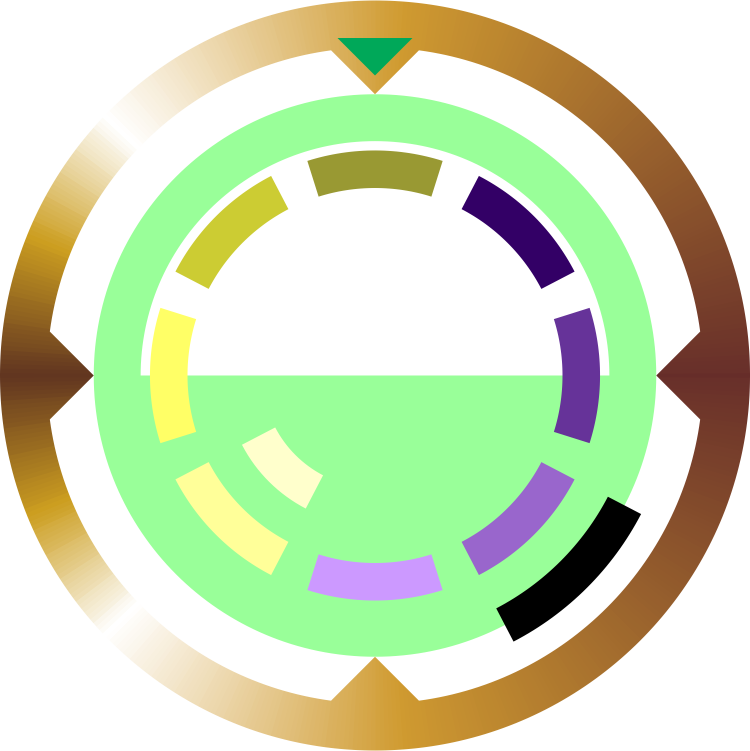Day and Night in the Manifold Sky
The Manifold sky is alight with "sunlight" and "moonlight" as appropriate for a day-night cycle lasting 24 hours and 20 minutes, complete with a waxing and waning of moonlight at night to match the progression of months. This would be unsurprising to most humans - and ancient sources even imply that the "place before history" had an actual sun and moon - except for the fact that the Manifold is an enclosed space with no visible, non-artificial celestial bodies.
Manifestation
There is an ambient glow in all regions of the Manifold Sky, though it's intensity increases relative to altitude. It is more pronounced in the inflection layers and nearly absent in the commissures, creating the perception that the sky glows with "sunlight" or "moonlight" relative to the surrounding terrain. While the actual ambient luminosity of the air is low on a per-region basis, allowing human beings to sleep normally and not be blinded by constant light arising from within their own vitreous humors, constructive interference with light in adjacent regions means that, by the time light reaches the surface of a cube layer, it is as bright as terrestrial daylight.
Localization
The emission spectrum of ambient daylight is determined by an observer's location within a tesseract, with regions close to the Medial Tesseract being biased towards the visible spectrum and regions close to the Distal tesseract being biased towards both the infrared and ultraviolet ends of the spectrum. The perceived spectrum of daylight once it has reaches ground observers is influenced by reflection off of the materials which make up the layers of a given cube, giving the perception that the opposite layer glows with a particular color, as well as by absorption or re-emission by any atmospheric contaminants (i.e. smog) present there.
The exact source of this lighting remains unknown, with some scholars asserting that a hidden sixth dimension or objects outside of the five-dimensional Manifold are the source. It appears that whatever unknown physical property generates sunlight an moonlight within the Manifold Sky does not affect all tesseracts at the same time. The "time zone" of a tesseract is determined by what time, relative to other tesseracts, peak sunlight occurs, as though the Manifold itself were "spinning" near some external light source in five-dimensional space. When a tesseract is in peak sunlight, the tesseract opposite it (the tesseract with which the tesseract in peak sunlight shares no cubes) is in deepest darkness; the former is said to be at "noon," while the latter is said to be at "midnight."
Peak sunlight progresses through the tesseracts in the following order:
- Medial
- Ventral
- West
- Rostral
- North
- Distal
- Dorsal
- East
- Caudal
- South
A Navigator's Guild compass rose, showing a visual representation of the daytime progression. Colors go from light yellow to dark yellow, to black, then from dark purple to light purple. Arrangement based on maps presented in the manual The Geometries of the Manifold Sky - A History.
Type
Natural





Comments